Packed with potentional, steamer trunks were a welcome traveling companion on ocean cruises.
When people traveled throughout the nineteenth and early twentieth centuries, there was no such notion as packing light.
For the increasingly popular and lengthy journeys across the Atlantic Ocean, travelers had to pack numerous toiletries, an array of proper ensembles for various social encounters, and often-heavy clothing that would provide warmth against the crisp ocean air.
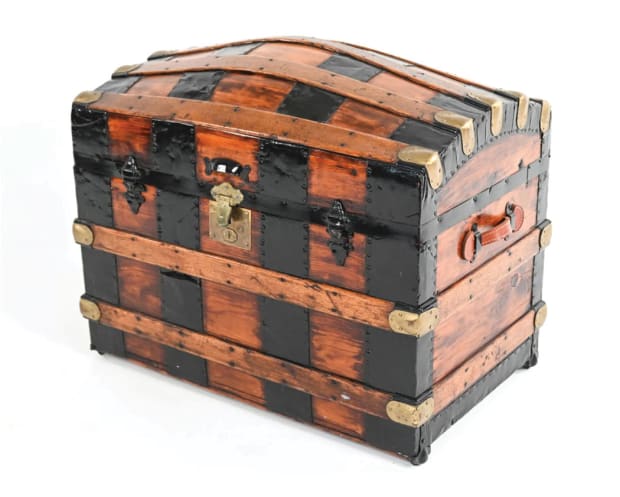
Courtesy of Westport Auctions
Not only was the luggage at the time weighty and cumbersome, but there was a financial incentive for most passengers to use restraint when packing, as there were charges for extra baggage.
Enter the steamer trunk, the new type of luggage that was larger, sturdier, and more portable. From 1880 to 1920, steamer trunks solved those traveling woes. A rugged reminder of a bygone era where all of one’s worldly possessions could be stored in a single piece of luggage; steamer trunks are highly collectible today and valued as decorative storage pieces that add charm to a home.
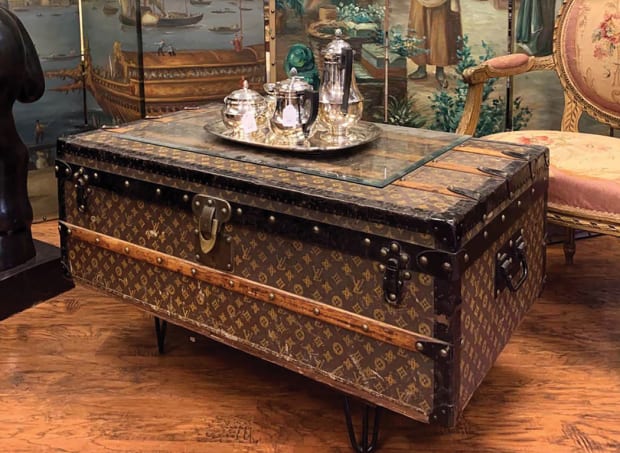
Courtesy of Antique Kingdom
A Welcome Traveling Companion
By the mid-nineteenth century, people were really on the move and could journey farther and faster than ever before, and steamer trunks accompanied travelers across the world. The name “steamer” comes from using these trunks on long voyages across the country on steam locomotives or across the ocean on steamships and ocean liners.
Due to early luggage regulations aboard steamships, the first steamer trunks were only around fourteen inches high, so most people were limited to packing only one or two sets of clothing and any other essential items that could fit inside the small box. Over time, steamer trunks grew much larger in size and storage capacity for clothing and personal belongings. Many also had small compartments and drawers for luxury items like jewelry and watches.
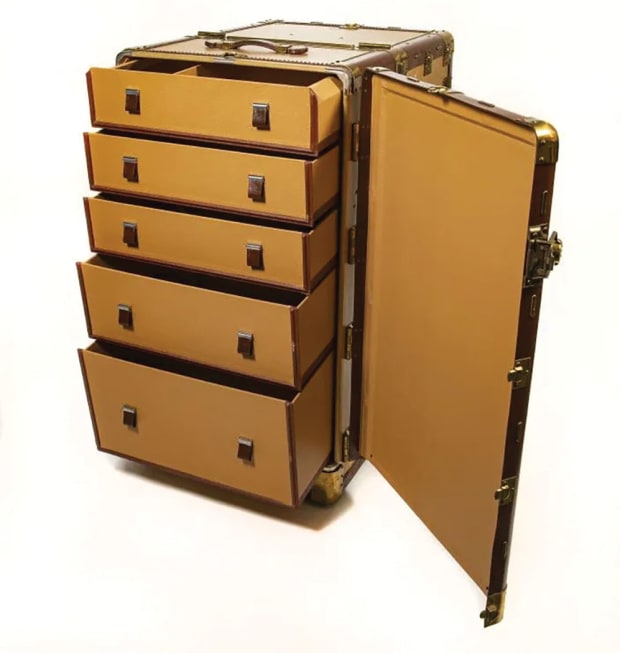
Courtesy of Taurus Auctions
The new models of steamer trunks were a welcome relief for travelers. For instance, a woman making the 2,800-mile journey from St. Louis to San Francisco, which took around 25 days, could easily fill one with petticoats alone.
Steamer trunks were made of wood, with pine being the most common. They were covered in decorative, durable outer layers like canvas, leather, or hide and had simple locks. Most also came equipped with leather handles or straps that allowed them to be easily lifted and secured in place once aboard.
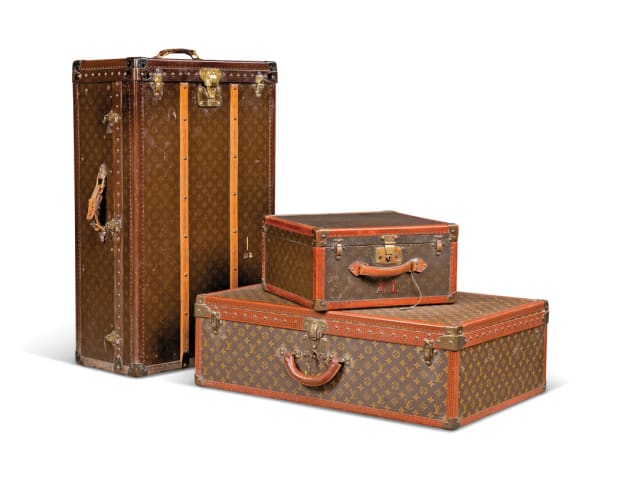
Courtesy of Christie’s
The interior was generally lined with decorative paper, while the exterior was covered in canvas, leather, and other materials, depending on how expensive the trunk was. The interior of more elaborate wardrobe trunks had multiple compartments, including a place to hang clothes, several drawers, and tray compartments that lifted out.
Most trunks have metal hardware, and metal bands were often added around the body for strength; some examples also have buckles and detachable leather straps. Proof of how durable these were, love letters, a diary, and business cards in a steamer trunk that sank with the Titanic in 1912 were still readable when the chest was recovered decades later.
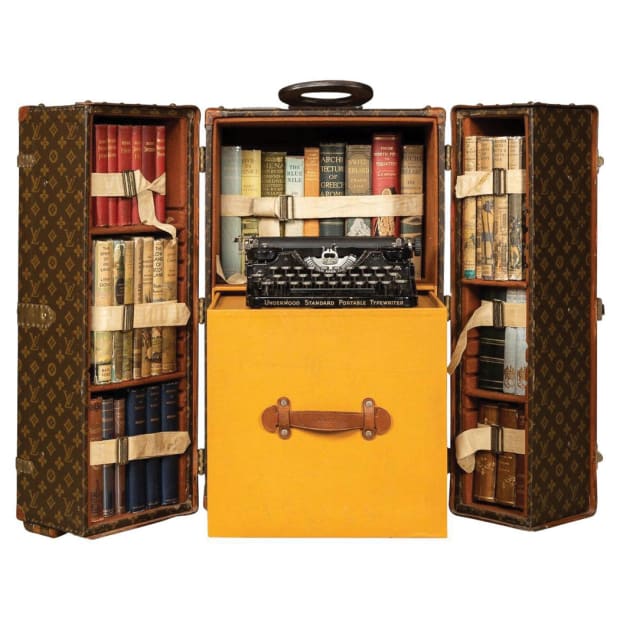
Courtesy of Pushkin Antiques via 1stDibs
Different Trunk Types
There are different styles of steamer trunks, from flat-top examples that could be stored better on ships and trains to those with curved lids or dome tops, which added extra interior space, stopped water from accumulating on top, and prevented other trunks from being stacked on them.
One of the oldest types of steamer trunks used on stagecoaches is the Jenny Lind trunk, named after the famous Swedish opera singer. These trunks, also known as stagecoach and bread loaf trunks, have a distinctive keyhole or hourglass shape. Lind used them when she toured America in 1850-1852 with PT Barnum, and they were copied by trunk makers who named them after her.
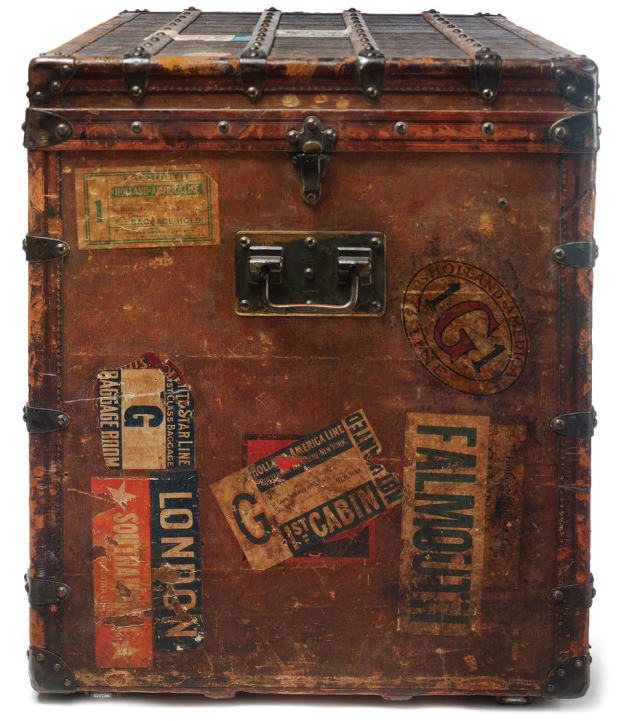
Courtesy of the Victoria & Albert Museum
Other trunks include the domed-top Saratoga, hat trunks for carrying hats and bonnets, and smaller cabin trunks that easily fit under train berths and in ship cabins.
Valuable and Iconic Steamers
As more people began to travel, fancy steamer trunks made of cloth and leather became status symbols. One manufacturer who made a big name for himself by offering a stylish, yet durable trunk was French designer Louis Vuitton, who perfected the box and then thought outside of it.
Beginning in 1854, Vuitton expertly crafted and packed trunks for the most privileged travelers.
While early trunks featured curved tops to repel water from pooling, Vuitton is credited with inventing the innovative flat-topped trunk to the French market in 1858 and its unique water-tight design. This more convenient, stackable trunk had Vuitton’s outstanding quality while being lightweight yet sturdy. He and his son also patented a revolutionary, sophisticated lock to protect the trunks from thieves. It was advertised as a lock that not even famous escape artist Harry Houdini could break free from.
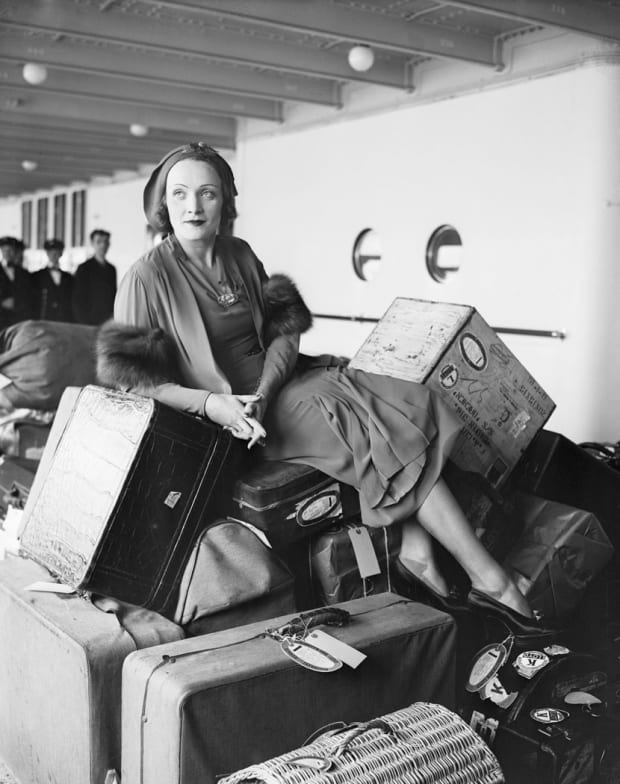
Bettmann/Getty Images
By 1896, the brand’s whole range of luggage became instantly recognizable with the addition of the now iconic canvas monogrammed with “L.V.” Vuitton’s trunks are highly valuable today and sought after by collectors worldwide.
By the 1920s, the use of steamer trunks started to dwindle, and they were replaced by more modern luggage choices that were lighter for traveling, especially by air. The days when people wouldn’t leave home without one may be gone, but steamer trunks are now collected as decorative conversation pieces.
Trendy Uses for Steamer Trunks
Today, antique steamer trunks are passed down as family heirlooms and can also be found at auctions, antique stores, flea markets, and online e-commerce sites, including 1stDibs, Chairish, eBay, Etsy, and Ruby Lane. While a Louis Vuitton trunk can sell for tens and even hundreds of thousands of dollars, many other less high-profile examples can be found in the $50 to $100 range.
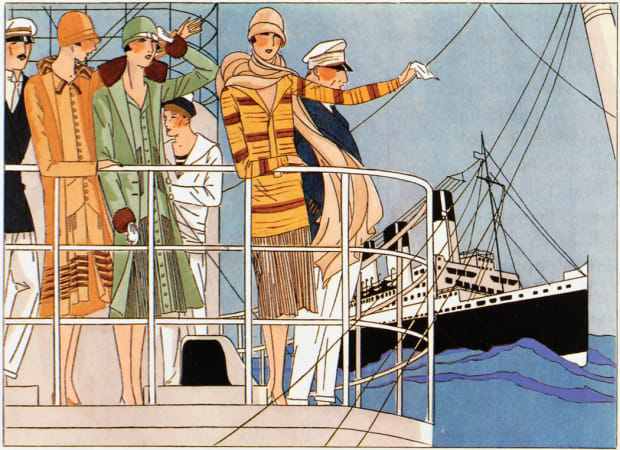
Photo by © Historical Picture Archive/CORBIS/Corbis via Getty Images
Antique and vintage steam trunks are a charming piece of travel history and can make a statement as decorative and functional furnishings. When looking for a good steamer trunk, there are some things to consider, including strength and sturdiness, storage capacity, ornamental value, and the maker — when possible, buy a trunk from a reputable brand, such as Martin Maier or Vuitton.
There are various creative ways collectors use steamer trunks, including these:
Storage: This is the most common use for a trunk, as storage is one of its primary functions. They are perfect for storing bedding and blankets, books and magazines, clothes, shoes and boots, special keepsakes, or toys.
Continued on page 30
Continued from page 26
As a home bar: Because they often have interior cubbies, drawers, and shelves, wardrobe steamer trunks are excellent to repurpose as a bar by turning the trunk vertically, adding some legs, and propping open the lid to create an open libation station.
As coffee or side tables: Many steamer trunks are the same height as coffee tables (between 12 to 18 inches), and a flat-topped trunk can make a funky furniture piece by adding a sheet of glass or a metal tray on the top to provide stability to glassware or decorative objects. Several smaller trunks can be stacked between armchairs or on the side of a couch to serve as a side table.
While they may have retired from traveling across oceans, steamer trunks still hold a prized space in collections all over the globe.









